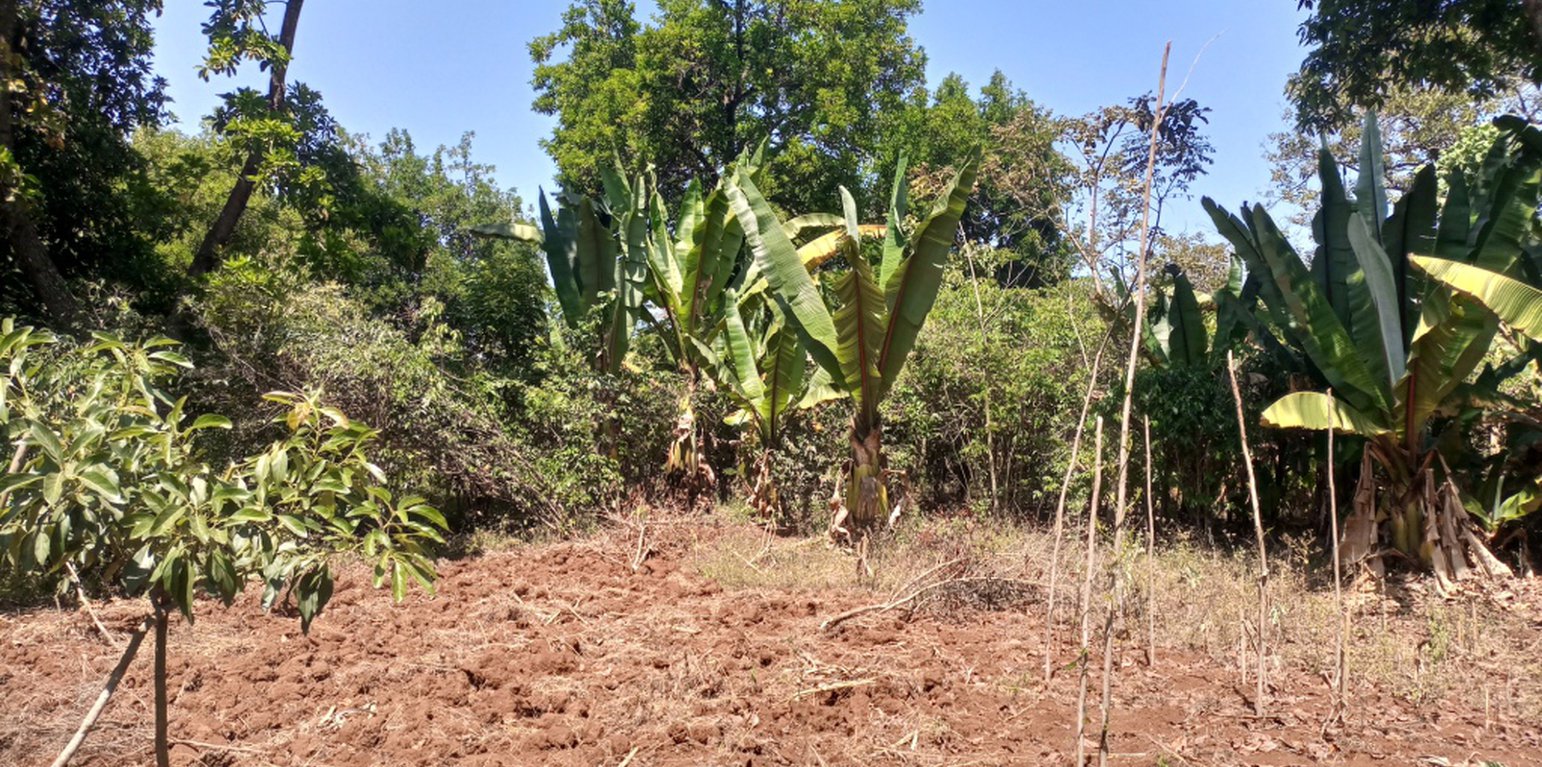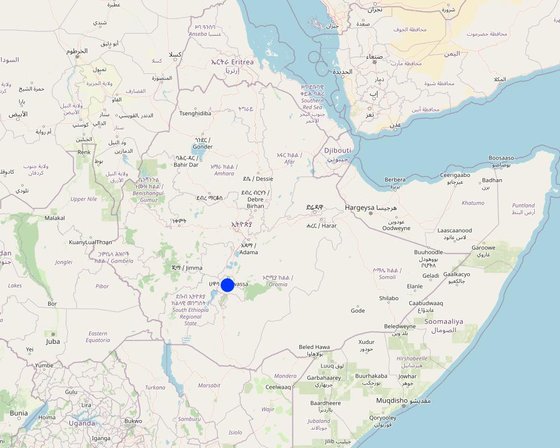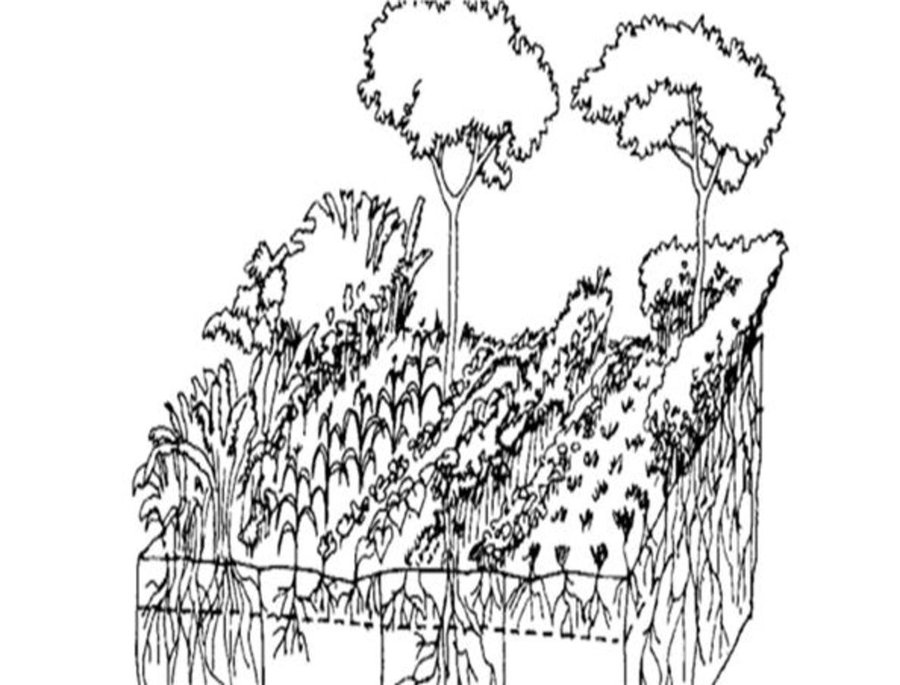



Multistorey agroforestry is the intentional mixing of trees/shrubs with crops and pasture at different levels ("storeys" or heights) and the livestock. The practice creates environmental, economic, and social benefits for the end users. Agroforestry practices provide opportunities to integrate productivity and profitability with environmental stewardship resulting in healthy and sustainable agricultural systems that can be passed on to future generations. Tree litter increases soil organic matter and reduces soil chemical and biological degradation. Tree cover can reduce soil erosion and evaporation from the soil surface. The technology is applied close to the homestead as it demands close follow-up and steady management practices, and that is where tree-crop-livestock integration can be best applied. The farmer whose practice is described here used to be very poor four decades ago. He has planted coffee gradually over the years under shade trees. As a staple perennial food crop, enset was planted also in the mixture. Livestock were also integrated. Eventually, numerous multipurpose tree species, food and fodder crops, and physical structures with productive barriers were integrated into the farming system. As a consequence, a multistorey agroforestry system has been established over years.
The purpose of the technology is to ensure ecological, economic, and social benefits. The rolling landscape of the area necessitates permanent ground cover to reduce the effect of erosive rainfall that degrades the soil. Once established, the technology needs management practices including pruning/stumping of coffee trees, managing other trees, weed control, enrichment planting with coffee and enset, and fertilization of annual and perennial crops. The livelihood of the respondent farmer has been completely changed. He has made a significant accumulation of wealth from producing and sale of tons of unprocessed coffee, avocado fruits and some indigenous bananas. This form of agroforestry creates year-round employment opportunities for proactive farmers. However, subsistence farmers with small parcels give priority entirely to the mono-cropping of cereals and other fast-maturing crops to meet their urgent demand for food. Shortage of land, capital, and a general lack of awareness about the sustainable benefits of the technology are reasons for lack of adoption of the technology.

Location: Shoye kebele (Kebele - lower administrative level), Sidama, Ethiopia
No. of Technology sites analysed: single site
Spread of the Technology: applied at specific points/ concentrated on a small area
In a permanently protected area?: No
Date of implementation: 1980; 10-50 years ago
Type of introduction










| Specify input | Unit | Quantity | Costs per Unit (Ethiopian Birr) | Total costs per input (Ethiopian Birr) | % of costs borne by land users |
| Labour | |||||
| Land preparation | Oxen plow | 16.0 | 200.0 | 3200.0 | 100.0 |
| Planting annual crops | Oxen plow | 4.0 | 200.0 | 800.0 | 100.0 |
| Planting perennial crops | PDs | 20.0 | 70.0 | 1400.0 | 100.0 |
| Planting fodder crops and trees | PDs | 5.0 | 70.0 | 350.0 | 100.0 |
| Equipment | |||||
| Spade | Number | 1.0 | 400.0 | 400.0 | 100.0 |
| Hoe | Number | 1.0 | 600.0 | 600.0 | 100.0 |
| Digging fork | Number | 1.0 | 500.0 | 500.0 | 100.0 |
| Plant material | |||||
| Coffee seedling | number | 2500.0 | 10.0 | 25000.0 | 100.0 |
| Enset seedling | number | 6000.0 | 5.0 | 30000.0 | 100.0 |
| Tree seedling | number | 1500.0 | 2.0 | 3000.0 | 50.0 |
| Beans seed | kg | 50.0 | 42.0 | 2100.0 | 100.0 |
| Fertilizers and biocides | |||||
| NSP fertilizer | kg | 100.0 | 44.0 | 4400.0 | |
| Urea fertilizer | kg | 50.0 | 44.0 | 2200.0 | |
| Total costs for establishment of the Technology | 73'950.0 | ||||
| Total costs for establishment of the Technology in USD | 1'392.13 | ||||
| Specify input | Unit | Quantity | Costs per Unit (Ethiopian Birr) | Total costs per input (Ethiopian Birr) | % of costs borne by land users |
| Labour | |||||
| Enrichment/replacement planting | PDs | 5.0 | 70.0 | 350.0 | 100.0 |
| Fertilization | PDs | 40.0 | 70.0 | 2800.0 | 100.0 |
| Weeding | PDs | 40.0 | 70.0 | 2800.0 | 100.0 |
| Equipment | |||||
| Hoes | number | 4.0 | 600.0 | 2400.0 | 100.0 |
| Digging fork | number | 4.0 | 500.0 | 2000.0 | 100.0 |
| Spade | number | 4.0 | 400.0 | 1600.0 | 100.0 |
| Plant material | |||||
| Coffee seedling for replacement | number | 250.0 | 10.0 | 2500.0 | 100.0 |
| Fertilizers and biocides | |||||
| NSP | kg | 100.0 | 44.0 | 4400.0 | |
| Urea | kg | 50.0 | 44.0 | 2200.0 | |
| Total costs for maintenance of the Technology | 21'050.0 | ||||
| Total costs for maintenance of the Technology in USD | 396.27 | ||||
Tap water is accessible some distance away. The deep well the farmer has is not clean for drinking by the household but for cattle and cleaning goods and clothes.
It is difficult to guess the increment by weight of perennial crops such as Enset. Of course, the performance is much better in the agroforestry system with intensive management and application of organic fertilizers. The integration also ameliorates the microclimate of the area and makes the situation ideal for the crops.
In the agroforestry system, a combination of livestock manure, tree litter, and a mixed cropping system contributes to soil fertility and soil health which improves crop quality.
Increased with improved soil fertility and soil healthy.
Livestock access to feed during the dry spell when communal grazing land is denuded of grass. Furthermore, agroforestry promotes a cut-and-carry feeding system that strengthens reliance on one's feed reserves at disposal. This goes with the intensification of livestock production.
The practices rather improve the resilience of the crop as it creates an ambient environment.
The integration increase product diversity.
Cattle manure is used for the production of heat and light energy through the application of biogas technology.
Agroforestry's contribution to drinking water availability and water quality was not measured and was beyond the scope of respondents to comprehend and address the questions except the merely conceptual reflection. Of course, the technology reduces runoff and recharges the ground water which directly contributes to the availability of surface water for livestock.
Fertilizer supply changed more to organic than chemical fertilizer. The foliage of tree litter and in situ decomposition of organic matter added substantial value to the restoration of soil fertility.
Increased management demand with gradual increase of the integration of tree crops and the overall size of the land is remarked by the farmer.
Land users generate reasonable income from the integration of different perennial and annual crops as well as livestock.
The technology immensely contributed to SLM by covering the farmland with perennial trees and crops and by incorporating the physical structure into the practice.
The groundwater table is estimated to increase as the ground cover promotes the infiltration and vertical movement of the intercepted rain on a gradual basis.
As some tree species such as avocados consume large amounts of water for transpiration needs, the degree of evaporation reduction of the practices is counterbalanced by the integration of the high-consumers with low-consumer species. Overall, agroforestry has a positive impact on evaporation reduction.
Nutrient cycling is highly improved because different tree species may penetrate the impervious soil layer and bring the nutrient to the surface via tree litter, fix atmospheric nitrogen, and add to the soil.
Highly increase, though not measured for this particular farm.
The cause of soil acidity can be diverse including the soil parent materials. However, agroforestry has positive acidity-reducing factors by improving soil fertility and soil health.
Highly increased because of the combination of trees/shrubs with food crops and fodder crops.
Agroforestry hosts the predators and prey and creates balanced food chains that reduce the degrees of pest development.
It is a climate-smart agriculture by its virtue that increase carbon sequestration as a regenerative agriculture.
Even if the impact of agroforestry plays a positive reduction role in pollution, the overall impact is compromised by the total farmland covered by a combination of tree crops.
Agroforestry has a filtering capacity of polluted air with dust and adverse temperature such as during dry and hot days.
Intercepted by leaves of trees and shrubs.
It highly contributes to carbon absorption and storage above and below the ground.